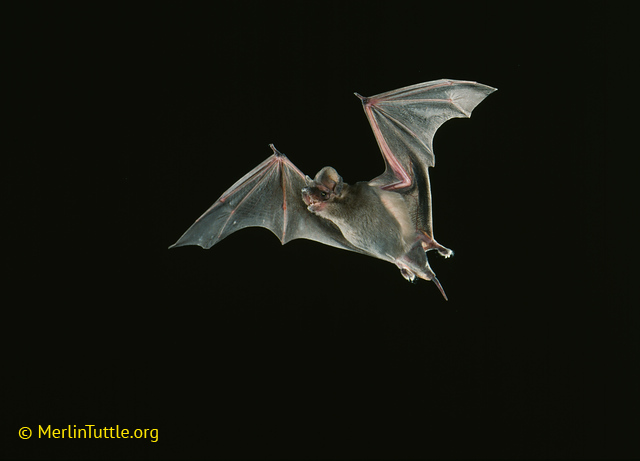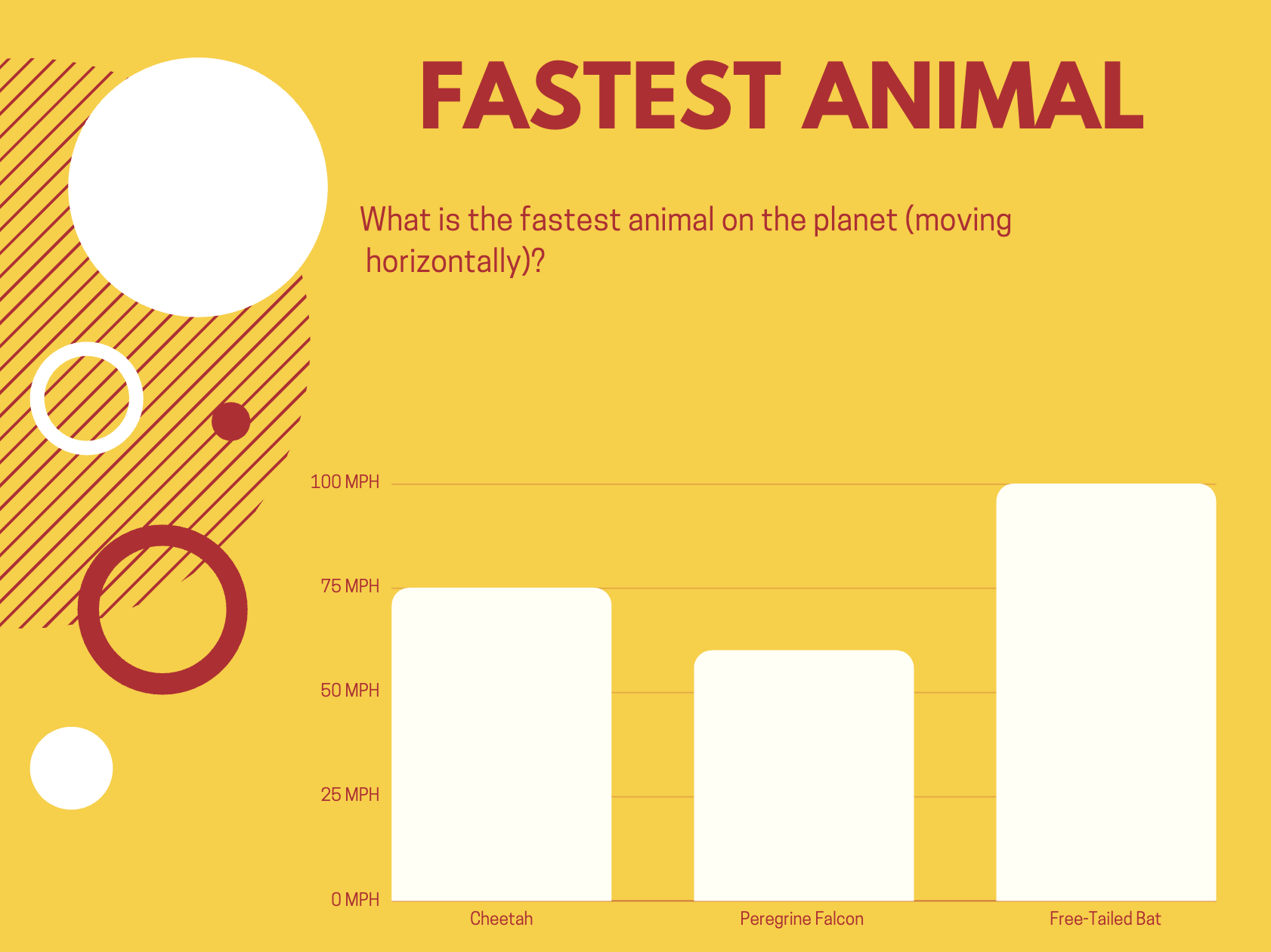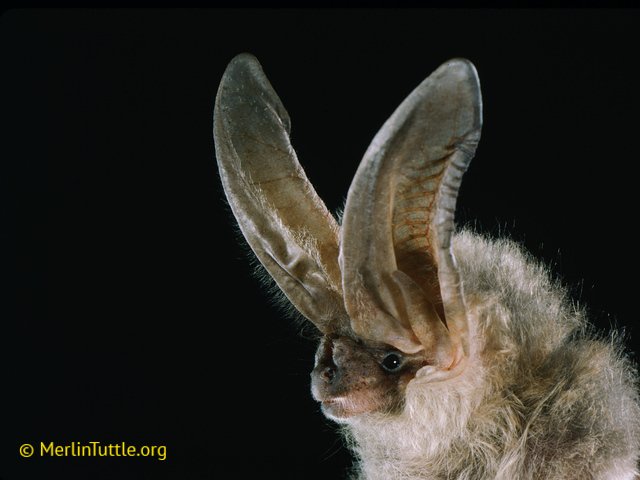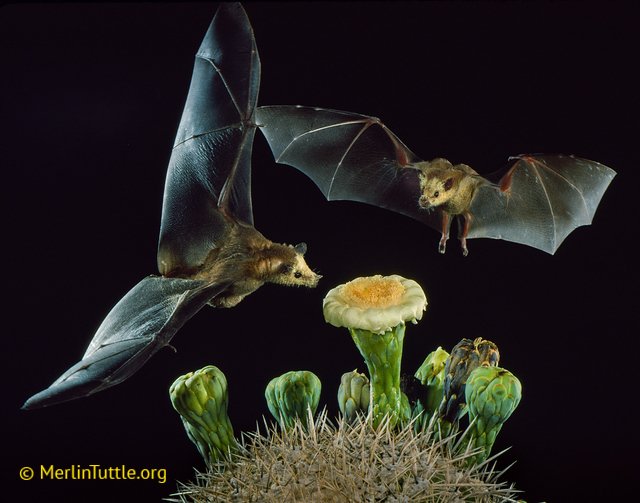Bats
Bats

Bats are the world’s only flying mammal.
It is so hard to sort out what bat facts are true and which are myths. Bats are one of our favorite animals yet they are so misunderstood. And they have incredible superpowers.
The world’s only flying mammal? Yep. Wait, bats are mammals? Since bats have fur, nurse their young with milk and give birth to live babies, they are mammals. And bats make up 20% of all mammals on the planet with over 1,400 species.
But don’t flying squirrels, which are also mammals, fly? Not really, they glide from tree to tree, which is still pretty cool. Read more about Flying Squirrels in our blog.
And do bats ever fly! A study (Nov 2016) clocked a Brazilian free-tailed bat traveling at 100 mph. Wow, even faster than cheetahs which run 75 miles per hour.
And while a peregrine falcon can dive bomb at 220 miles an hour going vertically they fly a mere 60 miles an hour horizontally.
What a superpower! They have the fastest horizontal speed of any animal on the planet. Just wow!

What Is Echolation?
![]()
Bats emit sound waves from their mouths and listen to the echo coming back. If there is an object nearby, like a moth, the sound will bounce off the moth and the bat knows where to fly to locate the moth. Now that is definitely a superpower!

Bats use sound waves to find food called echolocation

Micro and mega bats by Peppermint Narwhal
Micro Vs Mega Bats
Bats come in all sizes. From the tiny bumblebee bat only 1 inch long to the giant golden-crowned flying fox with a wingspan of over 6 feet.
And all bats fall into one of two categories. Microbats eat mostly insects and megabats (also known as fruit bats) eat mostly fruit.
Some bats also eat small mammals, birds, and fish. And then there are vampire bats (which are only found in South America) and they feed mostly on the blood of cattle.
The True Bat Facts
So what are a few of these myths and what are the real bat facts? Here we go:
Myth 1: Bats get caught in your hair. No, not ever. They use their echolocation to find insects, often swooping to catch a bug but avoiding a collision with you. They are not faintly interested in your hair.
Myth 2: Bats suck your blood. We have all been watching too many Dracula movies. Out of 1,400 bat species, only 3 are vampire bats. All live in Latin America and they prefer the blood of cattle or birds, not humans. So if you happen to sleep outside in Latin America, use mosquito netting and they will not bother you.

A very cute Townsend’s big-eared bat from West Texas.
Other Myths
Myth 3: All bats have rabies. Not even close! Less than 1/2 of 1% of bats have rabies. The World Health Organization reports 99% of all deaths from rabies comes from dog bites. Only 1-2 people die a year from rabies as a result of bat contact.
However, if you find an injured bat or one in your house, be sure to call a local rescuer for instructions to prevent injury to you or the bat. To put rabies in perspective, read more here.
Myth 4: Bats are grotesque looking and wicked. Actually, they are quite cute, very gentle and smart creatures. The females are great mothers. They share their food when another bat is hungry and babysit young pups when the mom is out foraging.
Why Should We Care About Bats?
The megabats are big pollinators, pollinating over 500 tropical plants used for food and medicine. Without bats, we wouldn’t have mangoes, agave (the main ingredient in tequila), avocados, cocoa or bananas.
And they help biodiversity by dispersing seeds through the forest. But one of their most important contributions is the amount of insects the micobats eat. A single bat can eat up to 1,000 mosquitos in a night.
Without bats, the insect population would explode, many fruits and nuts would cease to exist, and ecosystems that rely on seed dispersal and pollination could collapse. Not a pretty thought. In fact, we believe bats are the most important mammal on our planet which is why we are motivated to protect them and inspire others to do the same.

Two lesser long-nosed bats pollinating a saguaro cactus
Bat Populations Are Declining Rapidly
Unfortunately, the task of protecting bats gets more and more difficult. They are impacted by disease, climate change and destruction of their habitat. Many bats are also being killed based on superstitions or misconceptions, especially with all the misinformation about COVID-19 being caused by bats.
And one of the biggest killers is wind turbines. Wow, I had no idea! Find out what your electric utility is doing to prevent both bat and bird deaths from wind farms they operate. Just letting them know you are paying attention is a step in the right direction. You might be surprised, both pleasantly and not so…
Many bat species are being decimated by White-Nose Syndrome (WNS is a lethal fungus with no known cure). An estimated 6.7 million bats have been killed by the fast-spreading fungus since 2006, when it was discovered. It is found in 40 states in the US and 7 Canadian provinces.
Lots of resources are being deployed to try and save the bats but many efforts do more harm than good. At this point, there is no cure for WNS. The best way to help bats threatened with WNS is to avoid disturbing the bats and their habitat.
Our Experiences
Our founders, Loti & Dale, have grown to love bats over the years. They have seen them all over the world, most recently at Bracken Cave in Texas where they found the largest concentration of mammals in the world. And guess what? They were bats! Want to learn how it feels to be surrounded by 15-20 million bats flying out of a cave, then read our post “World’s Most Mammals?”.

Here we are at Bracken Cave outside San Antonio, Texas where 15 million bats live during the summer. Photo: Teresa Nichta
Loti & Dale often see the bats on their nightly walk in Western North Carolina flying through our local park at dusk. And if you go to Austin, you can see them emerging each night from the Congress Ave Bridge where 1.5 million bats live.
Inspired by these incredible creatures, Dale has carved sculptures of both microbats and flying foxes. His bat sculptures are definitely some of our favorites.
When “Cliff Hanger”, a microbat carved from Virginia steatite, sold, we donated 100% of the proceeds to 2 bat organizations. One is Bat World Sanctuary who saved hundreds of bats from drowning under the downtown bridges in Houston after Hurricane Harvey.

Tourists observing the emergence of 1.5 million Brazilian free-tailed bats from crevices beneath the Congress Avenue Bridge in Austin, Texas.
How Can We Help?
Second, have fun and build or buy bat houses for your yard. Think of bats as free, nontoxic pest control.
Help save bat habitat in your community by planting bat-friendly gardens and avoid disturbing them in their natural habitat which often includes caves.
Get involved in local conservation groups that protect bats. Or become a member of Merlin Tuttle’s Bat Conservation.
Most importantly, become a bat advocate and join us in spreading the word of all the wondrous things bats do for our planet. We love bats and hope you now do too!

Cliff Hanger by Dale Weiler. The proceeds from the sale of Dale’s sculpture were donated to bat conservation organizations.

A young minor epauletted fruit bat about to take his first flight away from his mother in Kenya.
Learn More
![]()
Bat Conservation Organizations
Merlin Tuttle’s Bat Conservation
Bat Resources
Climate Change & Bats by Merlin Tuttle
Batbnb.com Buy a bat house
Stop Blaming Bats For This Pandemic by Merlin Tuttle
Bats Inside Your Home? Here’s What You Need To Know by Porch Group
